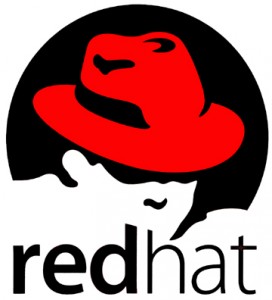Red Hat Partners with SAIC to Deliver Open Source Cloud Computing Solutions for U.S. Department of Defense
The U.S. Department of Defense will soon be running more projects on open source cloud computing technologies, thanks to a partnership between Red Hat and Science Applications International Corporation (SAIC), a technology contractor with many government and defense agency customers.

![]() Open source giant Red Hat recently teamed up with SAIC to increase the use of open source cloud computing technologies in projects for the Department of Defense, in an effort to deliver solutions that maximize security, scalability, interoperability and portability. Overall, the collaboration aims to help DoD customers overcome the barriers to cloud adoption, reduce infrastructure and provide increased capabilities.
Open source giant Red Hat recently teamed up with SAIC to increase the use of open source cloud computing technologies in projects for the Department of Defense, in an effort to deliver solutions that maximize security, scalability, interoperability and portability. Overall, the collaboration aims to help DoD customers overcome the barriers to cloud adoption, reduce infrastructure and provide increased capabilities.
SAIC will utilize a number of solutions from Red Hat in DoD related projects, including Red Hat Enterprise Linux, JBoss Enterprise Middleware, Red Hat Enterprise Virtualization, and Red Hat CloudForms. Additionally, Red Hat’s OpenShift Platform-as-a-Service (PaaS) will be deployed in SAIC’s Advanced Computer Engineering (ACE) Laboratory located in North Charleston, South Carolina.
SAIC’s ACE Laboratory will serve as the foundation for an open community, providing physical and virtual environments for hands-on collaboration between SAIC, other contractors, small businesses, information technology vendors and government employees.
The ACE Lab aims to foster collaboration and information sharing, promote cloud computing best practices and deliver low-cost, enterprise-scale “create once, optimally manage and reuse often” solutions.
The ACE Laboratory will help collaborators learn how to integrate Red Hat’s open technology portfolio across physical servers, virtual platforms and private and public cloud architectures.
Organizations working to develop and implement a cloud strategy can gain the knowledge and practical experience needed to select open source components for private Infrastructure-as-a-Service (IaaS), develop applications using PaaS and achieve mission and business objectives by delivering and consuming Software-as-a-Service (SaaS).
“Red Hat has a longstanding relationship with SAIC to provide open source technologies and methodologies on large programs in the federal government, dating back to our first master marketing agreement in 2006,” said Paul Smith, Red Hat’s vice president and general manager of public sector. “This most recent iteration capitalizes the widespread use by cloud providers of open source architectures to deliver services. Red Hat is a leading provider of supported, secure and scalable products for both IaaS and PaaS.”
“Using our ACE Lab, SAIC experts work with customers to develop advanced engineering solutions for some of our nation’s most significant cyber and software challenges,” said Jim Thigpen, SAIC senior vice president and business unit general manager. “With Red Hat on our team, we’re continually finding ways to use our expertise to help keep customers a step ahead of the curve when it comes to cloud computing.”
In March 2009, Vivek Kundra, the first-ever United States CIO, was tasked with improving efficiency while also making government data more available and useful to the public. Though he recently departed Washington to accept a fellowship at Harvard University, Kundra has left behind a legacy of IT reform, and initiatives like this and other cloud computing projects are a critical factor in improving efficiencies in government IT across all sectors.
With over 41,000 employees, SAIC provides services to all branches of the U.S. military, agencies of the U.S. Department of Defense (DoD), the intelligence community, the Department of Homeland Security and other government agencies.














